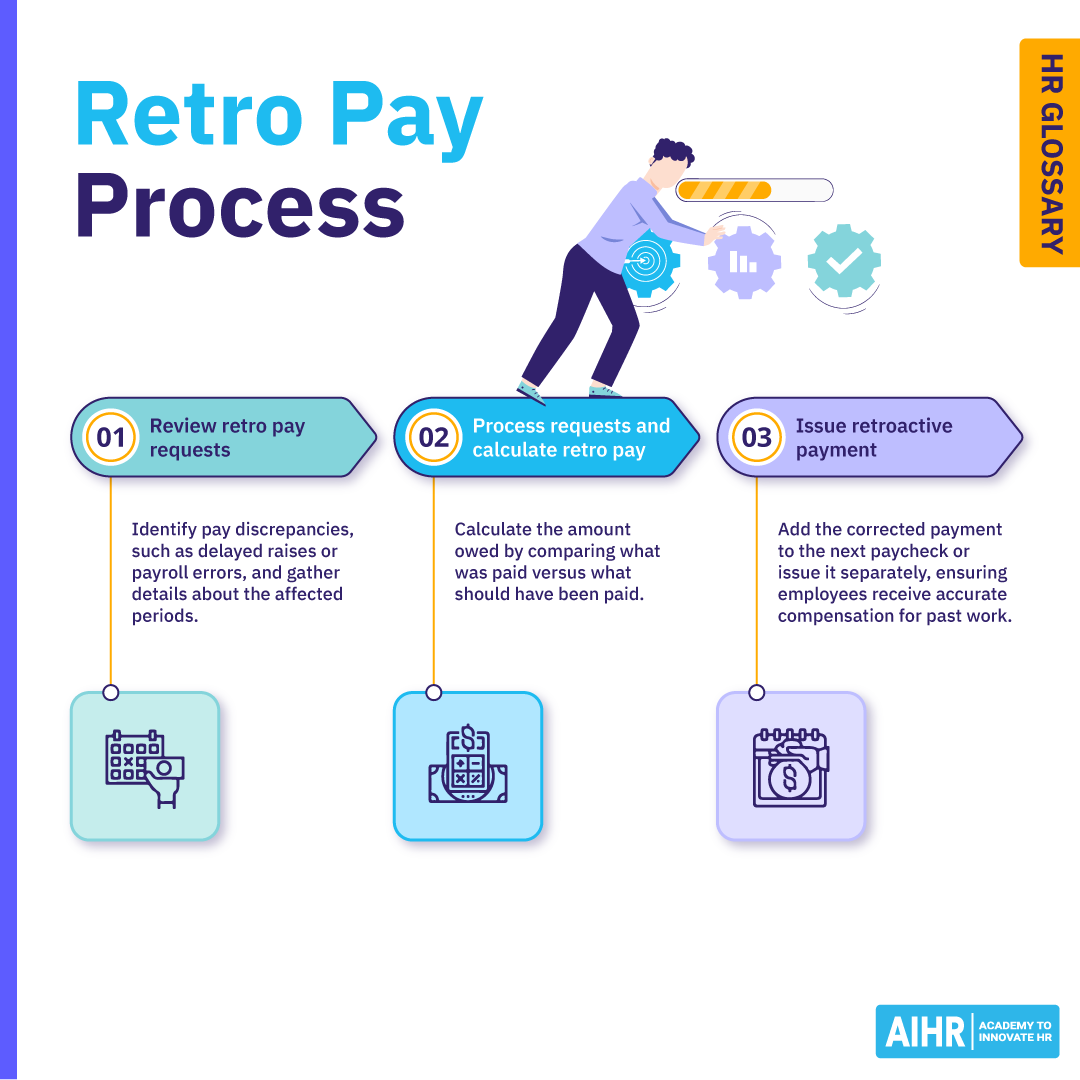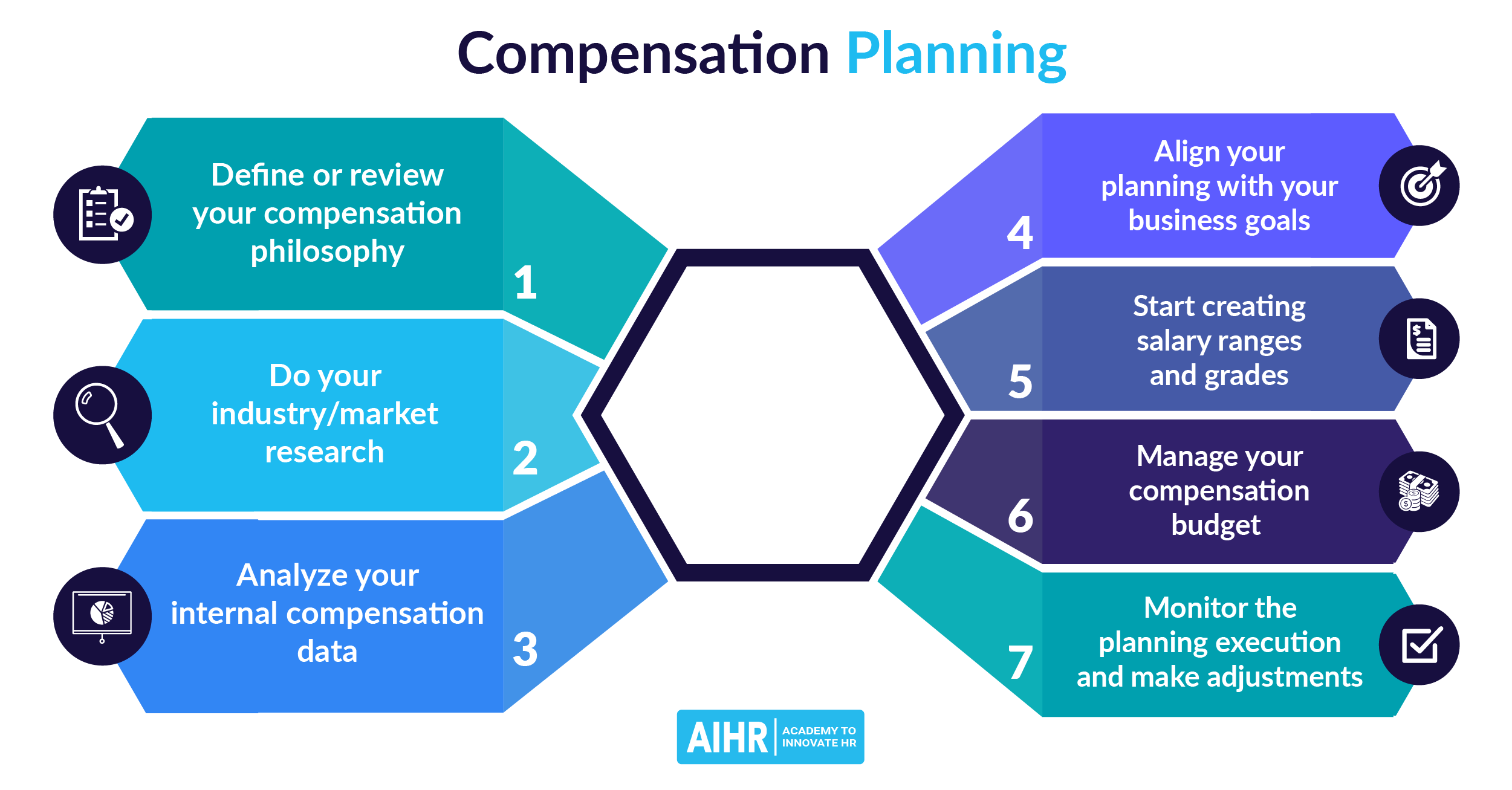Retro Pay
What is retro pay?
Retro pay (short for ‘retroactive pay’) refers to compensation added to an employee’s salary to correct an error made in a previous compensation cycle. This situation often arises due to payroll errors, delayed implementation of pay raises, or overtime miscalculations.
For instance, if an employee was supposed to receive a raise effective from a certain date but the payroll system wasn’t updated in time, the employer would need to issue retro pay to cover the difference for the affected period.
Calculating retro pay involves determining the difference between what was paid and what should have been paid, then multiplying that difference by the number of hours or pay periods affected. This ensures employees receive the full compensation they’ve earned.

What causes retroactive pay?
There are certain situations that cause compensation shortfalls and warrant retroactive adjustments:
- Delayed promotions or raises: When an employee’s pay increase is approved but not reflected in their paycheck immediately.
- Payroll errors: Mistakes in calculations, missed hours, or incorrect pay rates.
- Contract renegotiations: When a new contract or collective bargaining agreement specifies higher pay that applies to past work periods.
- Incorrect employee classification: Misclassifying an employee, (e.g., treating a non-exempt employee as exempt) may result in unpaid overtime.
- Policy changes: Adjustments to company policies, such as revised pay scales or benefit structures, might apply retroactively.
How does retro pay work?
The retroactive pay process begins by identifying the pay discrepancy, such as a delayed raise or a payroll error. The amount owed is then calculated by determining the difference between what was paid and what should have been paid. For hourly employees, this involves multiplying the rate difference by the hours worked during the affected period. For salaried employees, it’s based on the prorated amount of the salary adjustment over the affected time frame.
Once the amount is determined, the employer issues the payment. This is usually added to the next paycheck or provided as a separate payment. Retro pay ensures employees receive the correct compensation for past work, rectifying any underpayment from earlier pay periods.

How do you calculate retro pay?
Retroactive pay is calculated by determining the difference between what an employee was paid and what they should have been paid during a specific period. Here’s a step-by-step breakdown for salaried and hourly employees:
Salaried employees
Using the example of a pay raise, you need the following information:
- Previous annual salary
- New annual salary
- Number of pay cycles.
For example, Mark, who is paid monthly, earns an annual salary of $50,000. After a recent promotion, he receives an annual increase of $11,000. However, this is not reflected in his current payroll, which warrants retro pay.
To start, divide the previous annual salary by the number of pay cycles:
$50,000 / 12 = $4,166.67 per gross period
Then, calculate the new annual salary divided by the number of pay cycles:
$61,000 / 12 = $5,083.34
Then, calculate the difference between the amount the employee should have been paid and the amount they were paid:
$5,083.34 – $4,166.67 = $916.67 retro pay
Hourly employees
Using an example of overtime, you would need the following information:
- Amount of hours worked
- Amount of overtime hours worked
- Standard hourly rate
- Overtime rate.
Let’s say Michelle works 36 hours a week. At her manager’s request, she works an extra 10 hours of overtime each week.
However, in the current payroll cycle, she was compensated for 46 hours at her standard hourly rate of $15. The overtime rate is $22.
First, you need to calculate the difference between the overtime rate and the regular hourly rate:
$22 – $15 = $7
Then, you need to calculate the correct overtime pay:
10 hours x $7 = $70 retro pay
Retro pay vs. back pay
Back pay is compensation paid to an employee for a missed salary that should have been paid to them initially. This might be, for example, a commission you forgot to pay an employee. Retro pay is compensation provided to an employee to correct an error in the rate they were paid.
- If an employee worked overtime but you forgot to pay them at the overtime rate, you owe them retro pay.
- If an employee works overtime but is not paid for it, you owe them back pay.
What does it compensate for?
Differences from previous pay periods due to changes in pay rate or missed earnings items.
Unpaid wages owed to an employee, often due to errors, missed payments, or disputes.
Why is it needed?
To adjust for delayed pay changes like a raise, bonus, or incentive that weren’t reflected on time
To compensate for unpaid or withheld wages, usually caused by payroll mistakes or legal obligations.
What are some common causes?
Pay adjustments like raises, bonuses, or incentive pay missed in prior pay periods.
Missing wages due to payroll errors, misclassification, or disputes like wrongful termination.
How can HR issue retro pay?
Here’s a general process HR can follow to issue retro pay:
- Identify the need for retro pay: HR first needs to confirm if there was an error or omission in the employee’s pay, such as a missed promotion, salary increase, or overtime.
- Calculate the amount owned: The next step is to determine how much the employee should have been paid by comparing their previous pay to the correct amount. This may involve reviewing timesheets, salary increase documents, and other records.
- Adjust for taxes and deductions: Retro pay should include the appropriate tax withholdings and deductions (like benefits and retirement contributions), just as it would for a regular paycheck. It’s important to avoid over- or under-taxing the retro payment.
- Communicate with the employee: HR should inform the employee in writing, disclosing the reason for the adjustment and the amount they will receive.
- Issue the retro pay: Depending on company policy, the adjustment can be added to the employee’s next regular paycheck or issued separately.
- Record-keeping and reporting: Proper documentation of the adjustment is crucial for compliance and future reference, especially if the change impacts annual tax filings or reporting.
- Ensure compliance: Check to ensure retro pay is in accordance with local, state, or federal labor laws, particularly if there are rules about how quickly retroactive payments should be made.
FAQ
Retro pay refers to a payment made to an employee to correct a previous underpayment, typically due to errors, missed raises, or incorrect classifications. It compensates for the difference between what was originally paid and the correct amount owed for a past pay period.
Retro pay is taxed like regular income, subject to federal, state, and local taxes. The amount withheld depends on the employee’s tax bracket and any applicable deductions. In some cases, employers may apply a flat supplemental tax rate, particularly for lump-sum payments.









